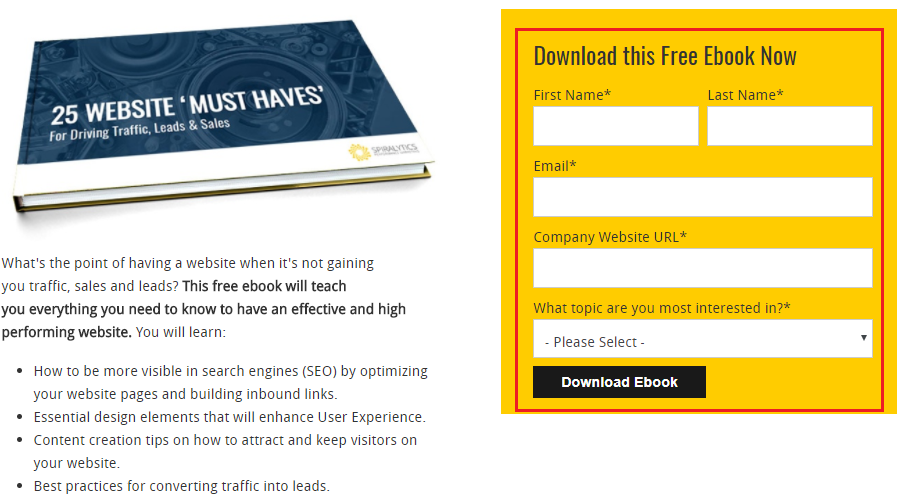Email marketing without data analytics is bound to fail. If you’re not able to reference your metrics, you won’t know if your campaigns are effective or not.
How many of your subscribers are opening or clicking through your emails? Who’s reading your email and what devices are they using to access your content?
Knowing the 5Ws and the H can help you gain insights into what type of email content, design, or format will resonate well with your audience. This framework will get you asking important questions like who, what, when, where, why, and how to maximize the impact of your email marketing efforts.
Data analytics is the bread and butter of measuring email campaign performance. More importantly, by tracking the following metrics, you can accurately pinpoint where you’re underperforming, scale what’s working, and minimize what’s not. Here are the primary email marketing metrics you should consider:
-
Open Rate
An email’s open rate is pretty self-explanatory. It refers to the percentage of people that opened the email to read its body contents. It’s safe to say that this is one of your most important metrics to watch because if a prospect doesn’t open your email, your message won’t get seen.

The two biggest factors affecting email open rates are the subject line and the preview text. These two fields make up the first impression of your email and determine how likely a person is to read it to begin with. To calculate your email open rate, simply start with the number of emails opened, divide it by the number of emails successfully delivered, then multiply by 100 to get a percentage.
For best results, keep it short, simple, and straight to the point. Focus on the value of the email content and make sure you’re personalizing it to your audience’s interests. Try to differentiate yourself from the pack by getting creative with your subject lines. Subject lines that stand out have a much greater impact.
-
Clickthrough Rate
Your email’s clickthrough rate (CTR) is the percentage of email recipients who clicked on any of the links contained in your email. There are two kinds of clicks namely unique clicks and total clicks.
Unique clicks refer to how many different IP addresses clicked on your email link, while total clicks include multiple clicks from the same devices. To determine your CTR, start with the number of your total or unique clicks, divide it by the number of emails you sent, and multiply the resulting number by 100.

Your CTR can be a telling metric for your team. It essentially shows you how effective the body of your email is and how compelling your CTA or link was to a recipient. So, if you’re getting lost of opens but not many clickthroughs, maybe it’s time to tweak your email text or CTA button.
Also Read: Why Does Email Marketing Work?
-
Conversion Rate
When it comes to B2B marketing, getting customers to convert on your offer will generally be the ultimate goal. A conversion happens when someone who clicks on your email takes the exact action that you want them to. This could be submitting an inquiry, downloading an eBook, signing up for a newsletter, or a multitude of other actions as defined by your conversion goal.

When you track your conversion rate, you’ll be able to analyze if your landing page and call-to-action (CTA) are effective enough to compel users to take action. To calculate your conversion rate, take the number of people who filled out your newsletter signup form, divide it by the number of emails delivered, and multiply the result by 100.
It’s a good practice to match the body of your email to the content on your landing page. This way, the message will be more consistent and easy to follow.
-
Bounce Rate
Another part of the email marketing data you need to track is your bounces – whether it’s a “soft” or hard” bounce. You could get a soft bounce if there’s a problem with your intended recipient’s inbox or mail exchange server, in which case, your email gets held up somewhere in the server.
Hard bounces are the ones you don’t want, as they mean you’ve contacted an invalid, inactive, or non-existent email address, and there is no chance ever for your mail getting delivered. The more serious consequence to this is your internet service provider (ISP) can track all your hard bounces and reduce your sender score, which can affect email deliverability in the future.
To get your bounce rate, take the total number of bounced emails, divide it by the number of emails sent, and multiply the result by 100.
-
List Growth Rate
This metric refers to the rate at which your email list is growing. Ideally, you’d always want this number to be positive because growing businesses need growing contact lists.
There are several factors why you might struggle with expanding your list of email subscribers. People might have moved from one company to another and registered a new email address. Some might have been locked out of their old email address and just decided to make a new one. At any rate, if your email list keeps shrinking in size and you’re unable to correct it through tracking, your deliverability and sender score will suffer.
To calculate your list growth rate, follow this formula: ([(Number of new subscribers) minus (Number of unsubscribes and Email/spam complaints)] ÷ Total number of email addresses on your list]) × 100.
-
Overall ROI
Although there’s no set formula for calculating the return on investment (ROI) of your email campaigns, you could (more or less) measure this metric by dividing the return you made by the cost you incurred during the email campaign.
One way you could focus on qualifying your email marketing’s ROI is lead generation. If you were able to generate new leads from your email campaigns, you should be tracking how many of those leads are likely to convert so you can gauge revenue generated.
Conclusion
Email marketing is one of the simplest yet most effective strategies that B2B marketers like you could take advantage of to help you achieve your goals. To this day, email still reigns as the best-performing marketing channel for B2B businesses, so it really shouldn’t be neglected.
To make the most out of this channel, make sure that you include metric analytics across your campaigns. For best results, also make sure you’re adhering to the Unwritten Rules of Email Marketing!
If you need help with email marketing, do not hesitate to contact Spiralytics, an email marketing agency so you don’t have to worry about anything!
Check out our FREE eBook on Smarter Email Marketing to learn how to effectively implement modern email marketing best practices for improved ROI.







